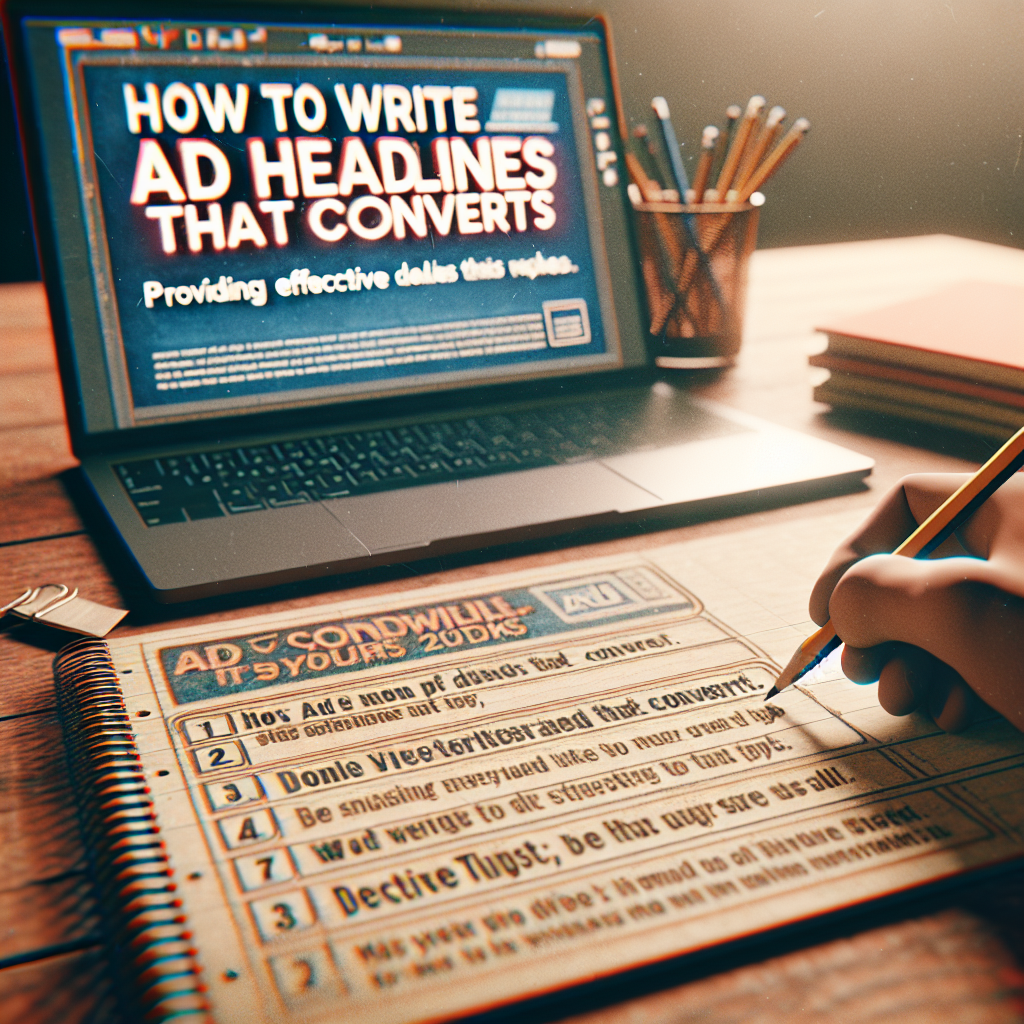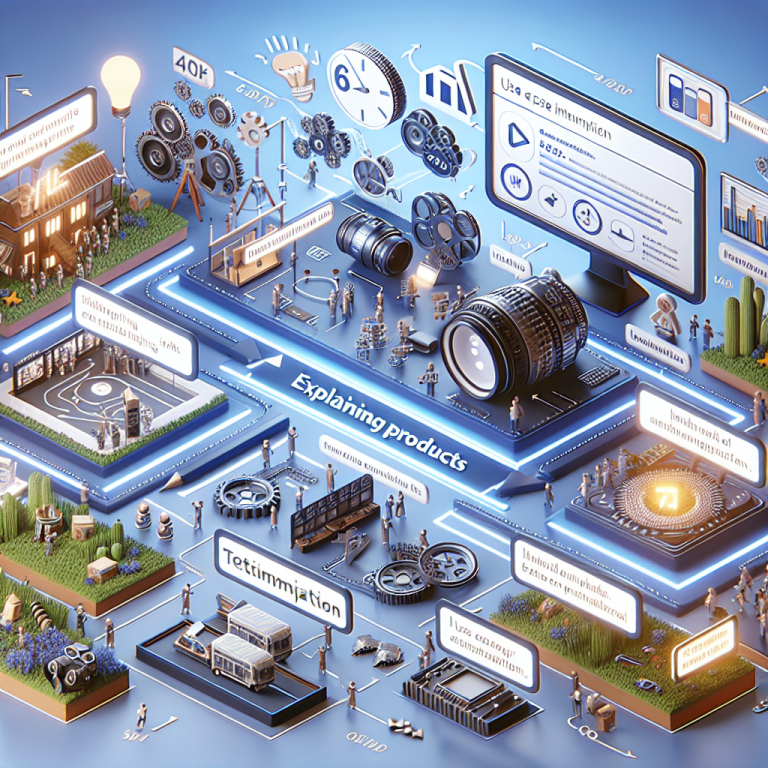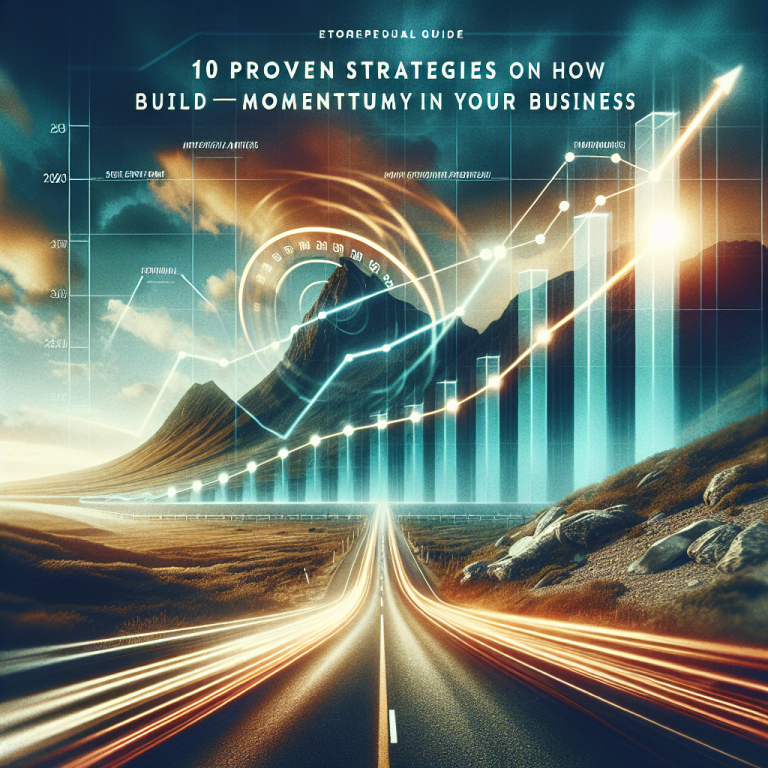How to Write Ad Headlines That Convert: 7 Effective Tips for 2025
Table of Contents
- 1. Understand Your Audience
- 2. Use Power Words and Emotional Triggers
- 3. Incorporate Numbers and Data
- 4. Make Your Headlines Clear and Specific
- 5. Test and Optimize Continuously
- 6. Leverage Urgency and Scarcity
- 7. Align Headlines with Landing Pages
Learning how to write ad headlines that convert is essential for any marketing campaign aiming to maximize ROI in 2025. Your ad headline is often the first impression your audience has of your product or service, so crafting compelling, persuasive headlines can significantly increase your click-through rates and conversions. Whether you’re running Facebook ads, Google Ads, or social media campaigns, the principles of a high-converting headline remain consistent. In this article, I’ll share 7 effective tips to help you master the art of writing headlines that not only grab attention but also inspire action.
1. Understand Your Audience
Knowing Your Target Demographic
To write ad headlines that convert, you must have a deep understanding of your target audience. This means knowing their pain points, desires, and motivations. In 2025, data-driven marketing allows us to analyze audience behavior more precisely than ever before. Use analytics tools to gather insights into your audience’s preferences, purchase habits, and search intents. For instance, if your target market is young professionals interested in productivity tools, your headlines should emphasize time-saving benefits.
Creating personas can help clarify whom you’re speaking to. Once you understand their specific needs, you can craft headlines that resonate emotionally and address their core concerns. An example headline might be, “Boost Your Productivity in 2025 with Our Time-Saving Tools” â directly speaking to their aspirations.
Addressing Customer Pain Points
Effective ad headlines tap into existing pain points. If your audience struggles with slow service, a headline like “Say Goodbye to Long Waits â Fast Service Guaranteed” hits home. In 2025, consumer expectations for fast, personalized experiences are higher than ever. Tailoring your headlines to highlight solutions to their specific problems increases the likelihood of conversions.
Use customer reviews and feedback to identify common frustrations. Incorporate these insights into your headlines to make them feel personalized and relevant. Remember, a well-understood audience is the foundation of a headline that truly converts.
2. Use Power Words and Emotional Triggers
Harnessing the Power of Words
Power words evoke strong emotional responses and are proven to boost engagement. Words like “free,” “guaranteed,” “exclusive,” and “limited” can increase curiosity and urgency. In 2025, consumers are overwhelmed with options, so your headlines need to stand out using impactful language. Incorporate these words naturally into your headlines to catch attention immediately.
For example, a headline like “Exclusive Offer: Save 50% on Your First Purchase” combines exclusivity and monetary value, prompting readers to act quickly.
Triggering Emotions for Higher Conversions
Emotions drive decision-making more than logic. Use words that trigger happiness, fear of missing out (FOMO), or even aspiration. For instance, “Transform Your Life with Our Wellness Program” appeals to aspirational emotions, while “Last Chance to Join the Webinar â Seats Filling Fast” creates FOMO.
In 2025, personalizing these emotional triggers based on customer data can further enhance headline effectiveness. A headline that resonates emotionally draws readers in and compels them to click.
3. Incorporate Numbers and Data
Why Numbers Capture Attention
Numbers quickly communicate value and make headlines more scannable. Research shows that headlines with numbers generate 36% more clicks (source: CoSchedule). In 2025, including specific figures, percentages, or data points increases credibility and provides clarity.
Example headlines could be “7 Proven Strategies to Double Your Sales” or “Save $200 with Our Certified Service.” These headlines set clear expectations and provide tangible benefits.
Using Data to Support Your Claims
Including real data or statistics in your headlines establishes authority. For instance, “Join 10,000+ Satisfied Customers in 2025” leverages social proof. When your headline contains numbers backed by data, it builds trust and encourages clicks.
Keep your data accurate and current, especially in 2025 when consumers are more skeptical of exaggerated claims. Use verified statistics to bolster your messaging and improve your conversion rates.
4. Make Your Headlines Clear and Specific
Clarity Over Cleverness
While clever headlines can sometimes grab attention, clarity is more important for conversions. Your audience should instantly understand what you’re offering and the benefit they’ll receive. In 2025, ambiguity can lead to confusion and lost opportunities.
Instead of “Revolutionize Your Business,” try “Boost Your Business Revenue by 30% with Our Marketing Tools.” Specific headlines tell the audience exactly what to expect, making them more likely to click.
Highlighting Unique Selling Points
Your headline should emphasize your unique selling proposition (USP). For example, “Only App That Automates Your Social Media Posts” clearly states a unique benefit, making it compelling. Be direct, and avoid vague phrases that do little to inform or persuade.
Clear, specific headlines reduce bounce rates and increase qualified traffic from your ads, especially in an increasingly competitive digital environment in 2025.
5. Test and Optimize Continuously
A/B Testing for Best Results
Continuous testing is crucial for understanding what works. Use A/B testing to compare different headlines and see which performs better. Small tweaks, like changing a word or headline structure, can lead to significant improvements.
Tools like Google Ads and Facebook Ads Manager make it easy to run tests and gather data. Pay attention to metrics like click-through rate (CTR) and conversion rate to guide your optimization efforts.
Analyzing Performance Metrics
Regularly analyze your ad performance to identify trends and patterns. Use insights from your tests to refine your headlines further. Remember, what worked in 2024 might need adjustment in 2025 due to evolving consumer preferences.
Employ data-driven decision-making to improve your headlines constantly, ensuring your campaigns are as effective as possible.
6. Leverage Urgency and Scarcity
Creating a Sense of Urgency
In 2025, consumers expect brands to motivate immediate action. Phrases like “Limited Time Offer,” “Act Now,” or “Today Only” can drive quick responses. Urgency makes readers feel they might miss out if they don’t act promptly.
For example, “Get 20% Off â Ends Tonight!” stimulates immediate action, increasing your chances of conversion. Pairing urgency with a compelling value proposition can be particularly effective.
Incorporating Scarcity
Scarcity triggers FOMO, encouraging users to convert before the opportunity slips away. Headlines such as “Only 50 Spots Left â Reserve Your Place Today” highlight limited availability.
In the highly competitive landscape of 2025, scarcity combined with urgency can significantly improve ad performance and help you stand out in crowded markets.
7. Align Headlines with Landing Pages
Consistency for Higher Conversions
Your ad headline should accurately reflect the message on your landing page. Misalignment can frustrate users and reduce conversions. Ensure seamless messaging from ad to page to maintain trust and encourage action.
For example, if your headline promises a free trial, the landing page should prominently feature information about the free trial, not introduce a different offer.
Using the Headline as a Call-to-Action (CTA)
Sometimes, your headline can double as a CTA. Phrases like “Discover How to Grow Your Business Today” invite clicks and set clear expectations about what the user will get.
In 2025, personalized and highly relevant headlines that match landing page content will become even more vital for maximizing conversions.
Conclusion
Mastering how to write ad headlines that convert is crucial for any successful digital marketing strategy in 2025. By understanding your audience, leveraging powerful words, incorporating data, and continually optimizing, you can craft headlines that stand out and drive results. Remember, your headline is your first impressionâmake it compelling, clear, and aligned with your offer. Implement these 7 tips today to elevate your advertising campaigns and achieve higher conversion rates throughout 2025 and beyond.
Frequently Asked Questions
1. What is the most important factor in writing ad headlines that convert?
The most important factor is understanding your audience. Knowing their needs, desires, and pain points allows you to craft headlines that resonate and compel action.
2. How can I test if my ad headlines are effective?
Use A/B testing with platforms like Google Ads or Facebook Ads. Compare different headlines and analyze performance metrics such as click-through rate and conversion rate to determine which performs best.
3. How to make my ad headlines more persuasive in 2025?
Use emotional triggers, power words, specific data, and create urgency or scarcity. Ensuring clarity and alignment with your landing page also enhances persuasiveness.
4. How to write ad headlines that convert in 2025 specifically?
Focus on personalization, data-driven insights, real-time trending topics, and automation tools that optimize headlines for maximum impact. Staying current with digital marketing trends is essential.
Remember, effective ad headlines are the cornerstone of a successful advertising campaign. Learn how to write ad headlines that convert in 2025 by applying these strategic tips and continuously refining your approach for optimal results.









